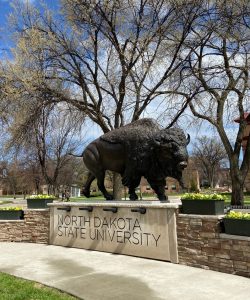I am a Ph.D. candidate in Dr. Michael Romero’s lab at Tufts University studying the broad effects of long-term chronic stress on the physiology of house sparrows. I noticed that the majority of chronic stress studies involved subjecting animals to one or two bouts of stress. While these studies are useful, they are not very ecologically relevant to what animals actually experience in the wild, which would likely involve more bouts of stress in their lifetime. In 2021, I conducted a long-term experiment studying the effect of varying intensity and duration of chronic stress on house sparrow physiology. One group of birds experienced 6 bouts of chronic stress (of increasing length and intensity) over 6 months, while the control group was held in captivity and only disturbed for husbandry purposes. We assessed a panel of commonly measured metrics of physiology: weight, corticosterone (baseline, stress-induced, negative feedback efficiency), metabolites (glucose, b-hydroxybutyrate, uric acid), DNA damage, immune function, and behavior.

While we were in the field catching birds for this exploratory project, Dr. Britt Heidinger called my advisor to chat about her telomere work. She said that the only time she saw effects of chronic stress on house sparrow telomeres was when the birds were juveniles. After many attempts of applying chronic stress to adult house sparrows, it seemed as though there was no effect. Dr. Romero told her about this long-term project on which we were about to embark, and we decided it would be easy to collect a bit more blood for telomere analysis, in addition to our typical DNA damage assay (a neutral comet assay, which measures double-strand breaks). This collaboration was ideal because we could use the Heidinger lab’s expertise to add another metric to our panel, while Dr. Heidinger could use our expertise in conducting chronic stress protocols with captive wild house sparrows to further investigate telomere attrition.
I applied for the g2g2pop travel grant so I could go to Dr. Heidinger’s lab at North Dakota State University and learn the telomere qPCR assay. Before leaving for NDSU, I extracted DNA from my red blood samples (taken from the stress group after acclimation to captivity, after stress, and after 6 weeks of recovery and taken from the control after acclimation to captivity, and after ~7 months). I shipped my samples to the lab and then flew to Fargo, ND.

Dr. Heidinger’s lab technician, Jeff Kittilson, helped me plan and conduct the DNA isolation over the phone while I was in Boston as well as the telomere qPCR’s at NDSU. My assays took 3 days to complete, including re-assaying a few samples that had low quality DNA. After a brief look at the data with Dr. Heidinger, it seems like there is not a difference between the control birds’ telomere lengths and the stressed birds’ telomere lengths, however I look forward to comparing the telomere data with the comet assay data (double-strand breaks).
I finished my assays with 2 days to spare in Fargo. My host (and post doc in the lab), Dr. Rebecca Young, gave me advice on where to sightsee in Fargo and pointed out her field site to me! I explored the Plains Art Museum and the Hjemkomst Center, a viking museum. We also went to trivia and a few breweries with other members of the lab.

While I had experience with both DNA isolation and qPCR before, I had never used those techniques to analyze telomeres. I learned a lot from Jeff, who showed me how meticulous you must be in order for the assay to work. I also enjoyed getting to know Rebecca and the other members of the Heidinger lab and to learn about their field-based research projects. Thank you to g2g2pop for this wonderful opportunity!